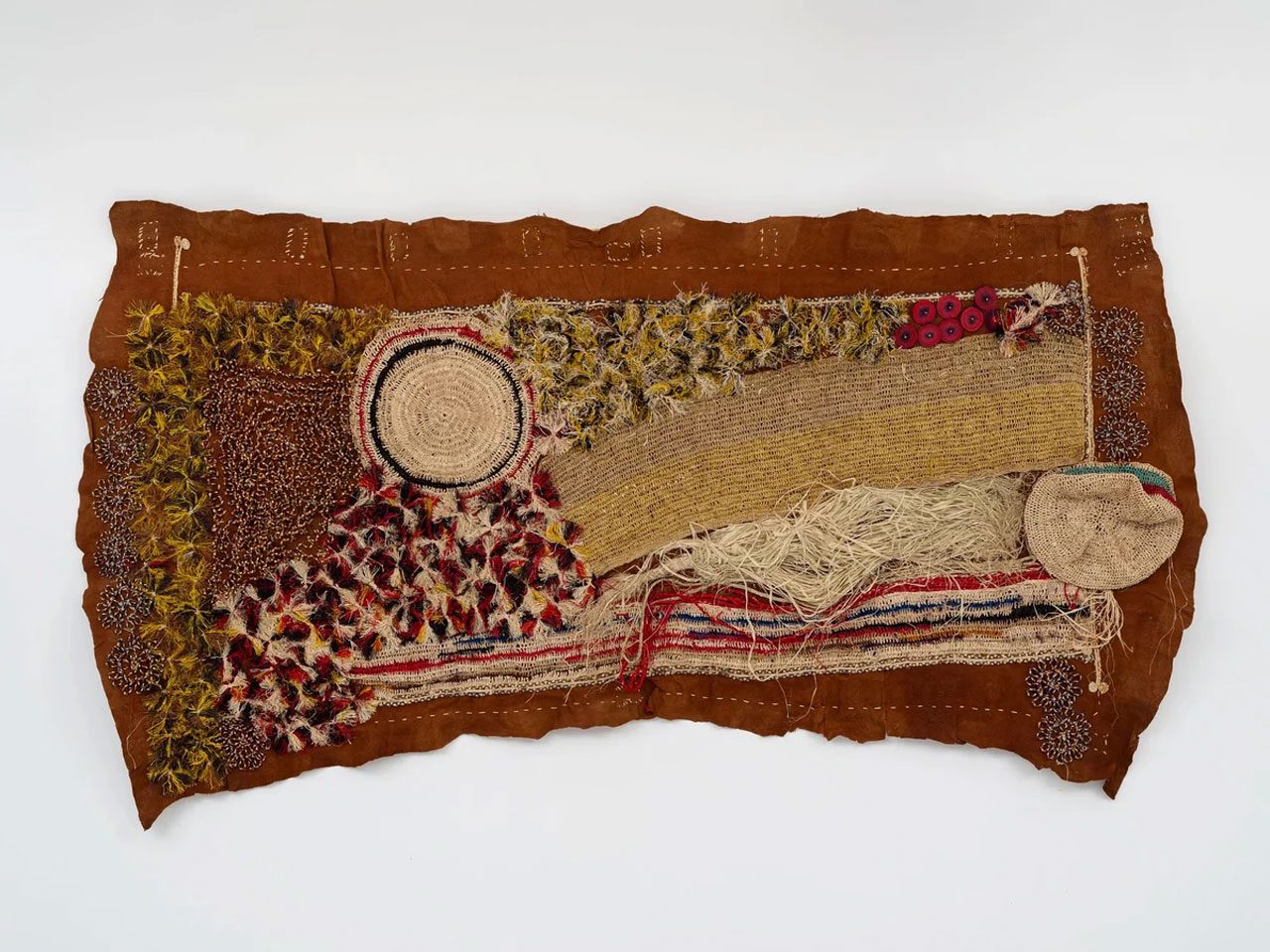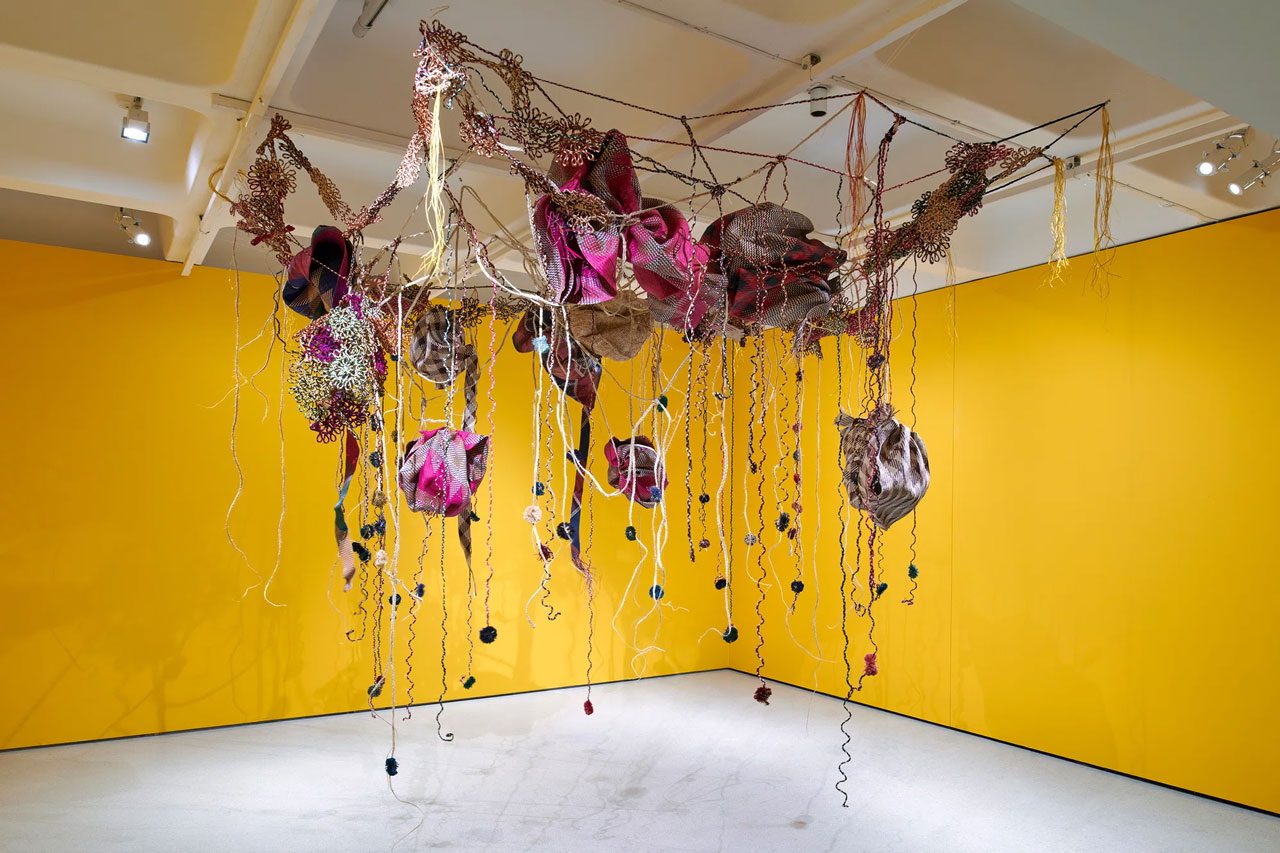ART CITIES: London-Acaye Kerunen
Acaye Kerunen’s multidisciplinary practice, spanning visual and performance art, sound, film, movement, poetry, curation, activism, and therapy, has established the artist as a leading voice in contemporary artmaking. She has created music, film, and theater productions and has been published in multiple international outlets. The processes of deconstruction and reconstruction are central to Kerunen’s practice. Her work seeks to disassemble the colonial and patriarchal structures that have long inhibited women’s freedom and artistic expression in East Africa and the Great Lakes region.
By Efi Michalarou
Photo: Pace Gallery Archive
“Neena, aan uthii” is the title of Acaye Kerunen’s debut solo exhibition in the United Kingdom, showcasing a new collection of sculptures, sound installations, and performances. The title, translated from Alur* language means “See me, I am here.” Based in Kampala, Uganda, Kerunen is a multidisciplinary artist whose practice spans visual and performance art, curation, and activism. For this exhibition, Kerunen presents sculptures that serve as vivid tapestries of embodied knowledge, crafted from natural materials and techniques rooted in Uganda’s diverse communities. These works exemplify her commitment to climate-conscious practices. Collaborating with artisans from Uganda’s 65 primary communities, Kerunen incorporates materials such as palm leaves, sorghum and millet stems, sisal, raffia palm, grasses, banana fibers, and barkcloth. These materials are harvested and prepared through traditional processes like stripping, dyeing, braiding, weaving, tanning, and crocheting. Each component carries cultural, ecological, and sociological significance, forming the foundation of her sculptural assemblages. Kerunen reimagines these organic and functional materials, transforming them into conceptual pieces that celebrate material, process, and surface as an interconnected whole. She likens her creations to “simultaneous equations”—intricate systems requiring the careful coordination of countless variables to achieve balance. Mathematics serves as a recurring theme in her work, reflected in the precision of weaving patterns and the harmonic structures that inform her sung sound works. Across Uganda’s artisan communities, complex configurations of pattern, number, and form are passed down as living, evolving traditions. Kerunen’s installations explore these mathematical processes, subverting their traditional harmonies to reveal their timeless brilliance. The exhibition’s color palette—featuring deep indigos, vibrant tangerines, fuchsias, and greens—reflects Kerunen’s engagement with the chemistry of natural systems. She creates her hues using dyes made from roots, flowers, grasses, and ash, sourced from Uganda’s rich ecological regions. These colors carry layered meanings, with subtle variations revealing the environmental and chemical conditions of their creation. Time emerges as a central theme in Kerunen’s work, embodied in the tactile processes of knotting, threading, sewing, and weaving. These acts not only document the rhythms of their making but also serve as repositories of collective memory, passed through generations. Her work highlights the fragile interplay between human labor, natural systems, and external forces like climate, harvest cycles, and supply chains. Through her use of raffia and thread, Kerunen creates an alternative archive—one that embraces impermanence and transformation while reclaiming time as a space for reflection, healing, and resistance against colonial and patriarchal narratives. Complementing her sculptural pieces, Kerunen has also created sound and video works that extend and deepen the storytelling woven into her art.
* Alur is a language spoken in the southern West Nile region of Uganda and the northeastern Ituri Province of the Democratic Republic of the Congo. The language’s subdialects are Jokot, Jonam/Lo-Naam (mainly spoken in the Democratic Republic of the Congo), Mambisa and Wanyoro.
Photo: Installation view, “Acaye Kerunen: Unravel: The Power and Politics of Textiles in Art, Feb 14 – May 26, 2024, Barbican Art Gallery, London © Jo Underhill / Barbican Art Gallery
Info: Pace Gallery, 5 Hanover Square, London, United Kingdom, Duration: 15/1-22/2/2025, Days & Hours Tue-Sat 10:00-18:00, www.pacegallery.com/
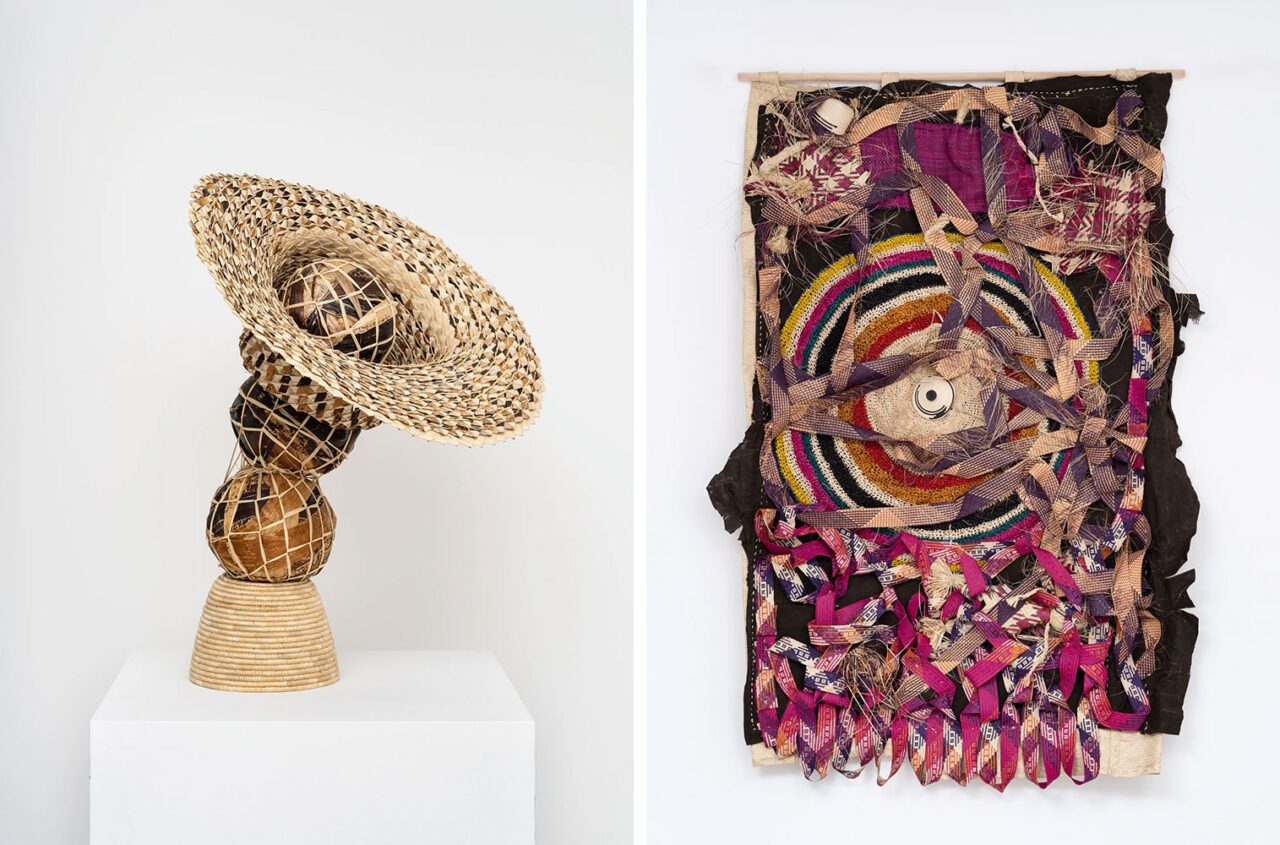
Right: Acaye Kerunen, Ker Mon (Reign of Females), 2024, clay dyed Mutuba, woven Kalanami Mikeka, dyed and woven raffia, sisal, 172 cm × 108.5 cm × 16 cm (67-11/16″ × 42-11/16″ × 6-5/16″), © Acaye Kerunen, Courtesy the artist and Pace Gallery
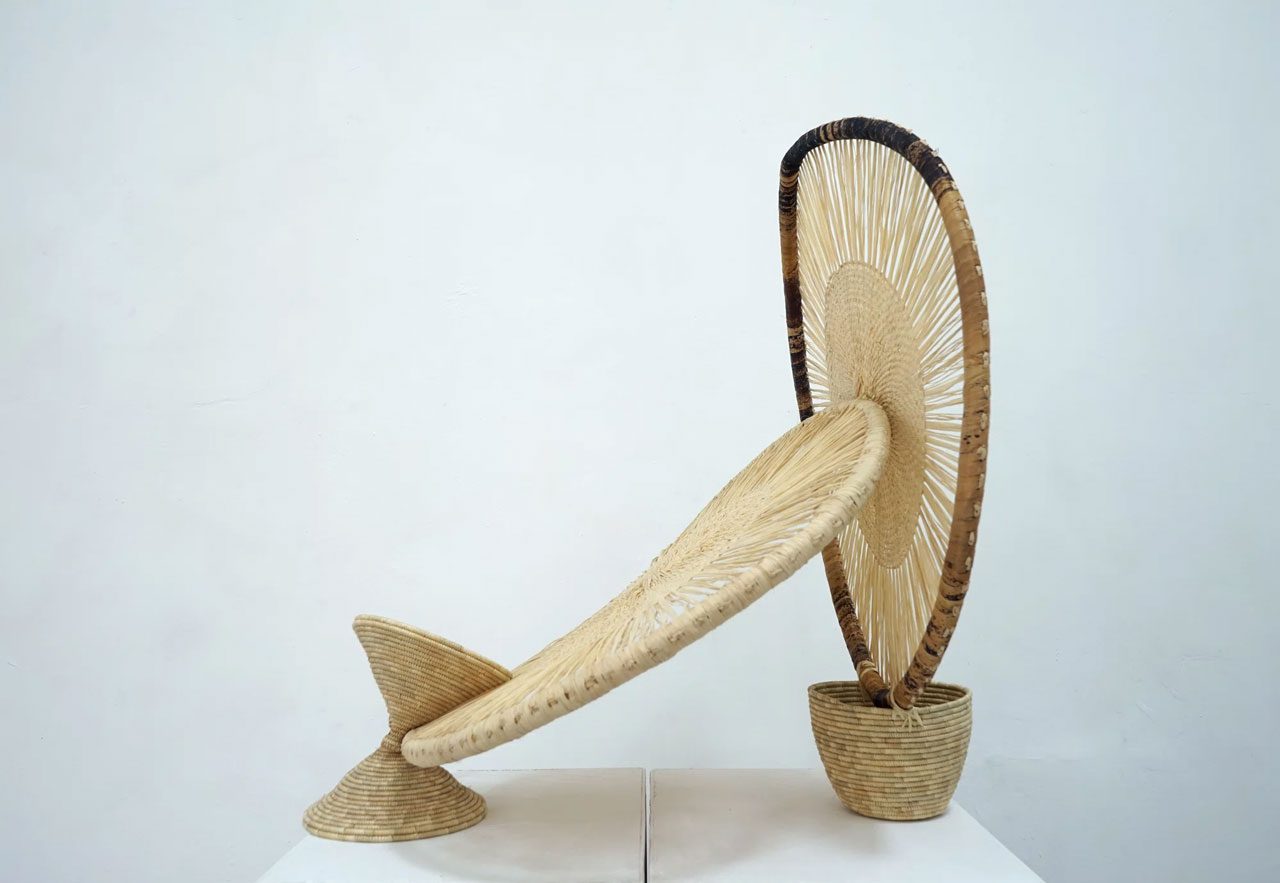
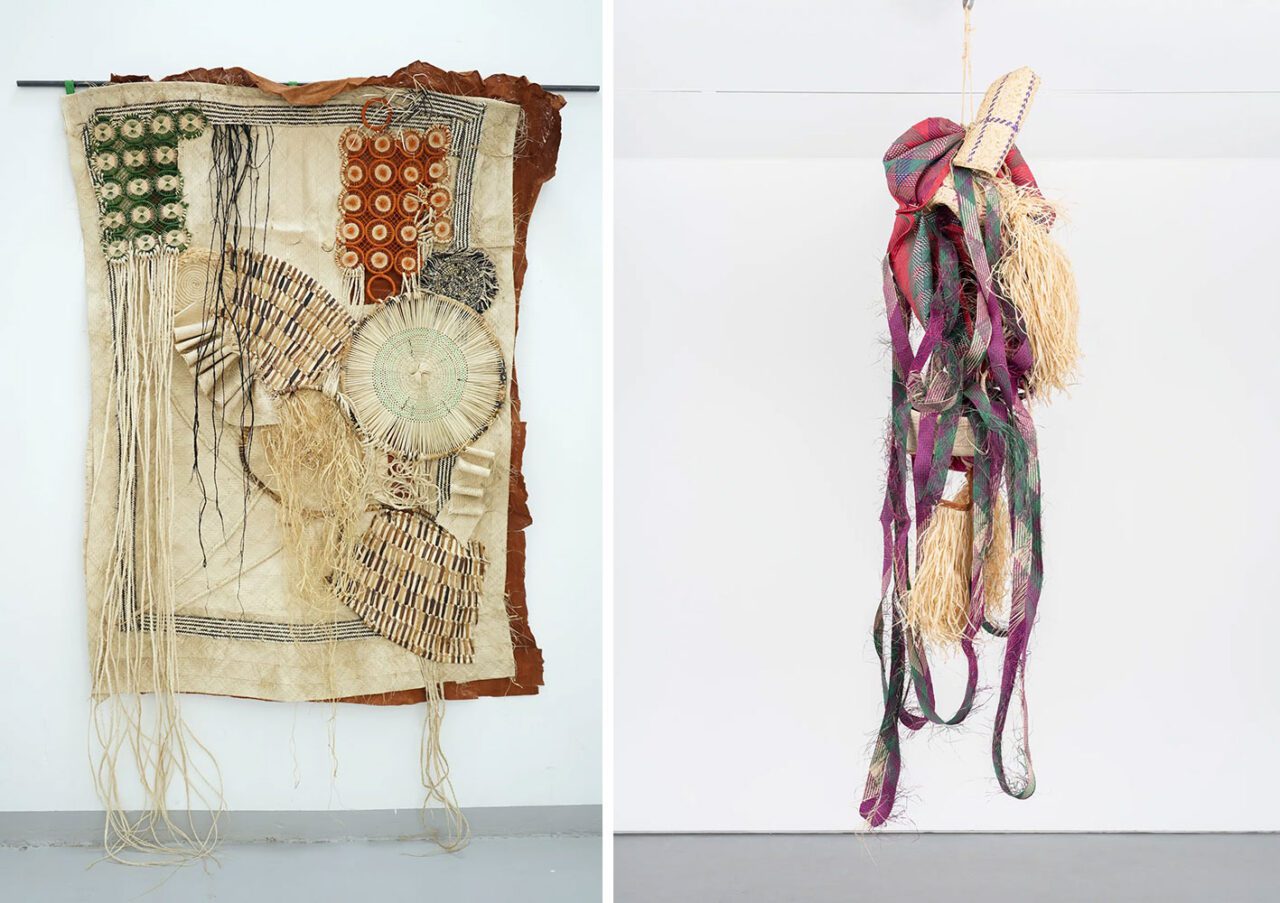
Right: Acaye Kerunen, Ebiinu (She has come, Has she come? Is she coming?), 2023, raffia, stripped and hand-dyed palm leaves, stripped and dyed sorghum stems, twined sisal, 281 cm × 70 cm × 50 cm (9′ 2-5/8″ × 27-9/16″ × 19-11/16″), © Acaye Kerunen, Courtesy the artist and Pace Gallery
